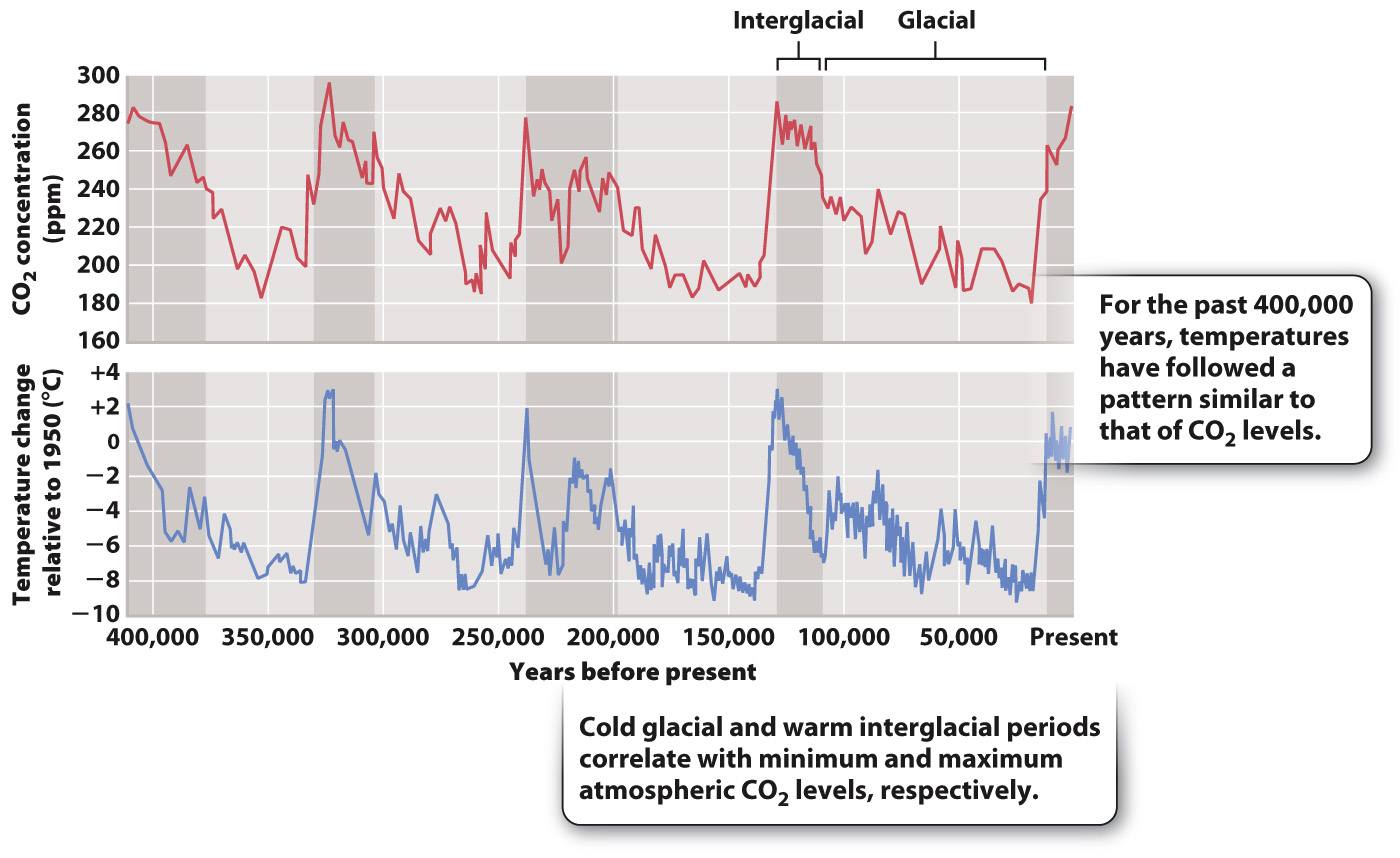Records of atmospheric composition over 400,000 years show periodic shifts in CO2 content.
Earlier in this chapter, we discussed evidence that before the Industrial Revolution, atmospheric CO2 levels had not changed appreciably for 1000 years or more. Longer-
518
At Vostok, high on the Antarctic ice sheet, glacial ice records more than 400,000 years of environmental history (Fig. 25.9). As shown in the top graph of Fig. 25.9, the youngest samples show about 285 ppm CO2 in the atmosphere, consistent with direct measurements of air, including the first years of the Keeling curve. Notice, however, that 20,000 years ago, CO2 levels were much lower—

The bottom graph in Fig. 25.9 shows an estimate of surface temperature obtained by chemical analysis of oxygen isotopes in ice from the same glacier and how it differed from the average temperature in 1950. Over the last 400,000 years, Antarctic temperature has oscillated between peaks of a few degrees warmer than today and temperatures as much as 6°C to 8ºC colder than the present. Interestingly, the temperature and CO2 curves closely parallel each other. As discussed more fully in Chapter 49, CO2 is known to be an effective greenhouse gas, meaning that it allows incoming solar radiation to reach Earth’s surface but traps heat that is re-
519
The two curves correlate closely with one further phenomenon, the periodic growth and decay of continental ice sheets. Large glaciers expanded in the Northern and Southern hemispheres a few million years ago, ushering in an ice age. Today, we live in an interglacial interval, when climate is relatively mild, but 20,000 years ago thick sheets of ice extended far enough away from the poles to cover the present site of Boston (Fig. 25.10). The repeated climatic shifts recorded in ice cores reflect periodic variations in the amount and distribution of solar radiation on Earth’s surface, which are caused by oscillating changes in Earth’s orbit around the sun.

520
The temperature and CO2 increases recorded by Vostok ice between 20,000 and 10,000 years ago coincide with the last great retreat of continental ice sheets. What processes might explain how atmospheric CO2 could increase by 100 ppm in just a few thousand years, as glaciers began to retreat? Can the short-
Scientists continue to debate why atmospheric CO2 oscillates in parallel with glacial expansion and retreat, but, increasingly, proposed mechanisms suggest interactions involving the ocean and its large reservoir of inorganic carbon. For example, it has been hypothesized that during glacial advances, the circulation of carbon-